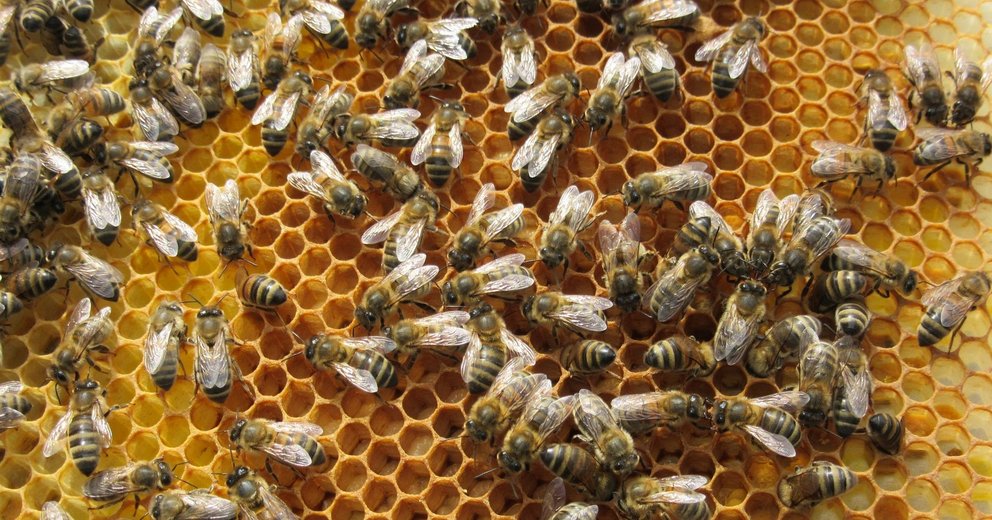
Bee Pathogens
Selective molecular detection of Paenibacillus larvae spores, the causative agent of American foulbrood in honeybees
Honey bees are agroeconomically highly important, not only due to honey production, but mainly because of their pollination services for crop production. Besides human-made threads, honey bees suffer from a number of diseases, among the most severe is the American foulbrood (AFB), a highly contagious, notifiable disease of bee brood caused by the spore-forming bacteria Paenibacillus larvae. In the event of an outbreak of this disease, extensive control and remediation measures are immediately necessary to prevent high economic damage.
Several diseases cause similar clinical symptoms in honey bees as AFB, such that an infection with P. larvae needs to be confirmed diagnostically. So far, the diagnosis of AFB includes the microbiological cultivation of the spores with subsequent morphological or molecular biological identification. The big disadvantage of this approach is the long timespan from sampling to result of 1-2 weeks, which makes rapid control of AFB difficult. The use of molecular biological methods is so far unsuitable for diagnostic AFB testing, as the available methods are not suitable for detecting DNA selectively from P. larvae spores - which represent the only infectious stage of the pathogen.
The aim of the project is to develop a new molecular detection system that differentiates between DNA stemming from spores and vegetative cells. By establishing a complete workflow, being able to selectively detect and quantify P. larvae spores from complex sample matrices like honey, the time to result for AFB diagnostics can be dramatically reduced from 1-2 weeks to 1-2 days. This will be an important step forward to better control this disease in honey bees.
AAE members involved in the project: Dr. Daniela Sint (PI), Dr. Michael Traugott

